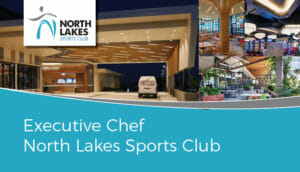“My name is Kevin, I’m from Queensland and I’m here to help” – K.Rudd, 2007.
Ok, so we all know how that one ended. Hopefully the insights that follow prove more successful for you than did Rudd’s Prime Ministership(s) did.
In all seriousness, being from Queensland, where card-in-EGM loyalty has been in place since the early 2000s, positions me well to provide some insights into how the concept could be improved here in Victoria. In fact, it’s not uncommon in the Queensland market for gaming venues (particularly clubs) to report carded play rates exceeding 70%, 75%, even 80% for entire calendar months.
The advent of voluntary pre-commitment in Victoria and the build up to that commencing in December 2015 saw hundreds of venues across the state invest thousands of dollars in new hardware and systems. Many took the decision to introduce systems that facilitated card-in-EGM loyalty at the same time as introducing VPC. After all, if a venue is being forced to invest in the hardware for regulatory compliance, why not spend a few more bucks and provide a positive player experience as well. And yet the best carded play rates we hear of in this market are in the mid-20% as opposed the mid-70%. A quarter instead of three quarters.
Rewards (incentive given in return for spend) and loyalty (tactics to change behaviour and preferences) systems are effective marketing tools (just ask airlines, supermarkets and fashion retailers). Operators should view them as a way to win visitation from competitors. Loyalty programs are not about any patron spending more on groceries or flights or gambling, they’re about which offer they choose more frequently. The first venue in any competitive catchment to do loyalty well will have a first mover advantage that their competitors will have to work doubly hard to overcome.
There are a few factors that are critical to success. There are also a few regulatory factors that could be used as excuses for why carded play rates are so low here after nearly 18-months of having this technology available. Let’s talk them through.
1. The technology must work.
I can recall working in a 200 EGM venue in the early 2000s offering a loyalty system (that will remain nameless) where 30% of card readers were routinely ‘out of order’. Even when players’ cards were inserted, the light would be red and no points would accrue. Players lost faith and left their cards in their wallets. And worse, when they patronised competitor venues whose hardware was reliable, we were at significant risk that they would choose that venue more frequently as they were receiving rewards. By the middle of the decade, we made the decision to scrap the hardware, well ahead of writing down the assets, and invested in a new system. The results were staggering. Same venue, same machines, same offer, same tactics, same players – carded play sky rocketed and turnover followed suit. If your hardware routinely fails, your provider is not fulfilling the terms of their service agreement and you’re entitled to a remedy.
2. Set goals.
Membership (database) growth, carded play rate, redemption rate. The holy trinity for a successful loyalty program.
3. Don’t be cheap.
Not to put too fine a point on it, but a point for $10 turnover is no incentive to put a card in an EGM, let alone fill out a form and pay you money for the privilege. Make it worth their while. One point per $10 is a rebate of 0.1% of turnover. It’s not uncommon in other markets to see rebates at 0.25% of turnover (1 point per $4) as a starting point for an entry level player. A ‘platinum’ or ‘diamond’ player in some tiered loyalty programs might be rewarded to the tune of 0.4% (1 point per $2.50). That sounds really expensive (and it can be) but consider whether you could rationalise some of your other marketing spend (e.g. a $40,000 FM radio campaign) to fund your entire loyalty points accrual for the year.
4. Make it easy.
Invest in human capital the way you have in technology capital. The system is just a VPC compliance system if you don’t back it up with some staff training. Staff should be confident that they know the key information and selling points. They should assist members to join. They should explain the benefits and how to obtain them. They should thank the patron for joining. They should issue a card on the spot and assist the patron to insert it in a machine.
5. Membership is about data, not dollars.
Even if a venue has 5,000 members and charges $11 for annual membership, the $50,000 that hits the P&L each year is still less revenue than a successful venue could make by lunchtime on Thursday most weeks through normal trading. In fact, a venue in a $70M per annum market only needs to pinch 0.07% market share (seven one hundredths of one percent of the market) to make that $50K back. A good database and loyalty system will win you enough market share to double, triple, quadruple any foregone membership revenue.
6. The legislation here is less favourable.
Yep, agreed. Cash is king and we can’t redeem points for cash. We also can’t offer a car as a prize linked to a turnover driven promotion. Some things in our economy are like cash. Some things have particularly inelastic demand (that is when prices move up and down, quantity consumed barely changes) and consumers buy them regardless. Some things dominate household budgets to the point that venues could substitute them as rewards instead of cash. Think of venue based products and items available from external vendors that fit that description. Think of creative promotion mechanics other than turnover driven ticket to barrel that can build loyalty, participation, visitation and revenue. Provide real value.
7. But Victoria is different.
Again, yep, agreed. Victoria is different. And Queensland is different. And NSW is different, and Las Vegas is different and every gambling jurisdiction is different. But not when it comes to this. Victorian players will participate just as readily in loyalty as players in other markets. They’re just not being offered the right incentives at most venues. This is new and it’s different and it represents change. The poor penetration is due to most venues simply not offering a great loyalty program and delivering it professionally.
Hopefully these insights are more successful than Rudd’s prime ministership(s). On the bright side, even if it’s not, perhaps I’ll be rewarded with a cushy overseas diplomatic post or a role at the UN.
For more on strategies to increase card-in-EGM loyalty at your venue, please contact us on 07 3878 9355 or info@dws.net.au.





